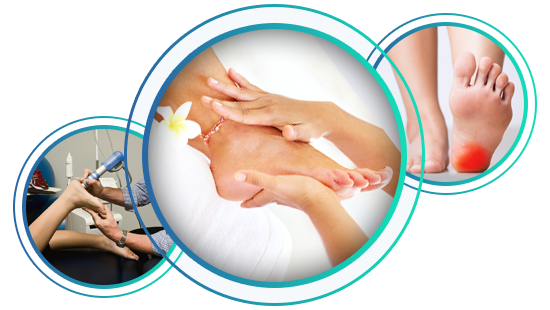
About Heel Pain / Plantar Fasciitis
Heel pain can be excruciating, prevent you from walking properly, and impair your mobility. When your heel hurts, you can get quick relief from Dr. Neil Zwiebel at Park East Podiatry in New York City, New York.
Park East Podiatry offers the most advanced, most effective Heel Pain treatments in Manhattan
and throughout NYC. Call us today at 212-207-4360. If you’re a resident of or work in the New York City area, Dr. Zwiebel is the best podiatrist in Manhattan to help alleviate your Heel and Plantar Fasciitis Treatment NYC.
Heel Pain / Plantar Fasciitis
Frequently Asked Questions & Answers
Why does my heel hurt?
Pain in your heel can be caused by a number of factors, but the most common cause is plantar fasciitis, with or without a heel spur. Some other common causes of heel pain include:
- Plantar Fascia Fibrosis
- Achilles tendonitis
- Stress fracture
- Bursitis (joint inflammation)
- Plantar Fascia Tear
How does plantar fasciitis cause heel pain?
Overuse or excessive stress on the fascia may irritate, inflame, and even tear the tissue. Plantar fasciitis pain feels like you’re being stabbed in the heel. The pain is often most excruciating in the morning, when you’re taking your first steps. You may also feel pain in the arch of your foot.
How do heel spurs cause heel pain?
Sometimes you may feel like you have a bony protrusion in your heel, but nothing is visible on X-ray. An invisible heel spur is referred to as heel-spur syndrome.
What are the risk factors for plantar fasciitis and heel spurs?
Tension and stress on the feet are the main culprits for both plantar fasciitis and heel spurs. You may be more at risk if you are:
- Overweight or obese
- An athlete or a runner
- Diabetic
- Older
- Wear ill-fitting shoes or sneakers
- On your feet most of the day
You’re also at risk if you have:
- Flat feet
- High arches
- Walking abnormalities
- Frequent, short episodes of high physical activity
What’s the best treatment for heel pain?
The best first treatment for any foot pain is rest, ice, and using anti-inflammatory or corticosteroids to control pain and swelling. Dr. Zwiebel may design custom orthotics or splints to support your arch and foot. He also recommends physical therapy and at-home exercises to stretch and strengthen your foot.
If conservative remedies fail, Dr. Zwiebel may recommend:
- Extracorporeal pulse-activated therapy (EPAT®) to reduce thickness of plantar fascia and decrease pain
- Platelet Rich Plasma (PRP) injections that stimulate healing and remodeling of tissue
- Laser therapy to reduce pain and stimulate healing
- Tenex Health® therapy that uses ultrasound energy and MicroTip scalpels to target and remove scar tissue
- AmnioFix® injections of micronized amniotic tissue to reduce pain and inflammation
Heal your heel pain by contacting Dr. Zwiebel for a consultation and therapy. You can call Park East Podiatry or book an appointment online.